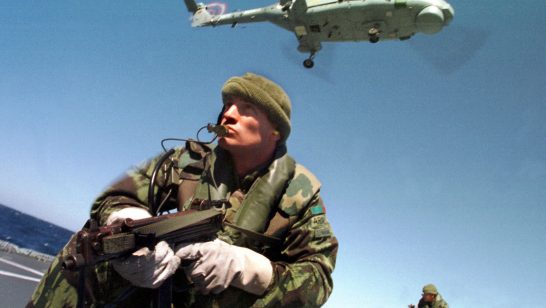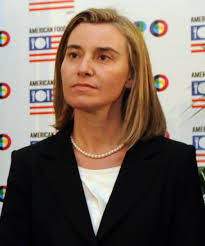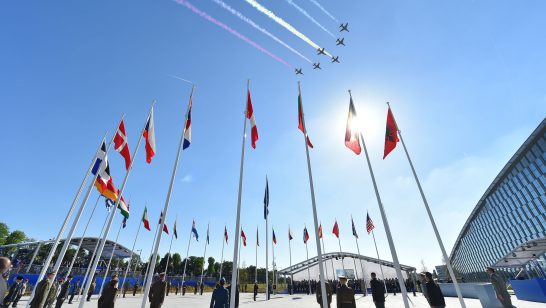
The EU-NATO Joint Declaration in July 2016 and the 42 Implementation Action Points of December 2016 have re-energised the relationship between the two institutions. For the first time in over a decade, this represents a significant step forward for their cooperation.
Building on consultations with experts and officials from the EU and NATO and their member states the ELN assesses the progress made since last summer. It takes two key areas of the Joint Declaration as case studies: exercising and capacity building, through which it identifies achievable opportunities for further EU-NATO cooperation.
The report concludes that further constructive and pragmatic development of the EU-NATO relationship is possible despite the political constraints. Member states should raise ambitions for the two institutions to not just cooperate – working together on goals which happen to overlap- but to collaborate – working together towards a common goal.
KEY FINDINGS
- After the Joint Declaration, informal structures were enhanced between the EU and NATO to improve cooperation. Although this has improved the relationship of the two organisations, they still operate mainly on an ad hoc basis, an issue which staff in both institutions are actively addressing.
- Within the EU, the European Commission’s role in defence and security matters is growing considerably. However, its operational capacity is limited given the limited number of staff who are trained to work with sensitive information, and its underdeveloped secure communications infrastructure. This affects all cooperation activities with NATO, in particular the development of shared responses to hybrid attack.
- In the area of exercises, staffs are providing pragmatic solutions to facilitate as close cooperation as possible within the limitations on information sharing. The new process of parallel and coordinated exercises (PACE) and its modular structure allows member states of both organisations to take part in different aspects of the exercises, whereas institutions’ staffs can interact in both exercises and at all levels.
- In the area of capacity building in partner countries, the two institutions are engaging in a process of information exchange to map their activities. More effort should be made towards better defining the level of ambition of EU-NATO cooperation in this area, and ensuring sustainability of their activities, particularly when managing the relations with partner countries.
- While political differences between member states impose sharp constraints, better cooperation could be achieved if practical obstacles such as security, mutual education and resourcing of the relationship were addressed.
- Information sharing between the two institutions is greatly constrained by treaty limitations as well as political divisions among member states.
- Although the process is led by the institutions, successful implementation of the Joint Declaration depends on the political will of all member states throughout.
KEY RECOMMENDATIONS
Institutions
Resourcing
- Highlight to member states the need to properly resource the implementation of the Joint Declaration, which currently has no allocated budget or staff.
Education
- Prioritise mutual education among staff of each other’s organisation with a long-term vision and integrated methods for building institutional knowledge, particularly at staff to staff level.
Communication
- Develop coherent EU-NATO strategic communication about the process, addressing the concerns of member and partners.
Further actions
- Consider integrating partners further in relevant areas of collaboration.
- Promote member state ownership of EU-NATO collaboration including by encouraging the development of shared Centres of Excellence and by encouraging member states to lead on cooperation projects or on activities with partner countries;
- Expand EU capacity by investing in expanding secure communications, security clearing more staff and training them to work with classified information.
Member States
Resourcing
- Provide NATO and the EU with the resources and staffing necessary for improving institutional cooperation.
Further actions
- Support for institutional progress by engaging the EU and NATO permanent representations in Brussels and in relevant partner countries.
- Explore opportunities for establishing additional Centres of Excellence.
- Facilitate EU-NATO collaboration in partner countries where possible. Consider on the ground cooperation to bridge institutional obstacles.
Raising Ambitions
- Member States and institutions should consider intensifying joint action beyond the 2016 Declaration. This could include joint planning of activities, use of funds for common projects and increasing political reciprocity.
- Formalise the EU-NATO relationship by designating permanent coordinators at junior and senior levels.
- Expand the areas of cooperation beyond the seven already identified. The two institutions could consider joint programming, even if this is facilitated by an independent implementing agency. This would provide a buffer against opposition from countries outside the 22 common members and reduce legitimacy issues when working with local stakeholders.
- Clarify the goal of EU-NATO relations should not merely be cooperation between the institutions but collaboration for better security in Europe.
The opinions articulated above represent the views of the author(s), and do not necessarily reflect the position of the European Leadership Network or any of its members. The ELN’s aim is to encourage debates that will help develop Europe’s capacity to address the pressing foreign, defence, and security challenges of our time.




